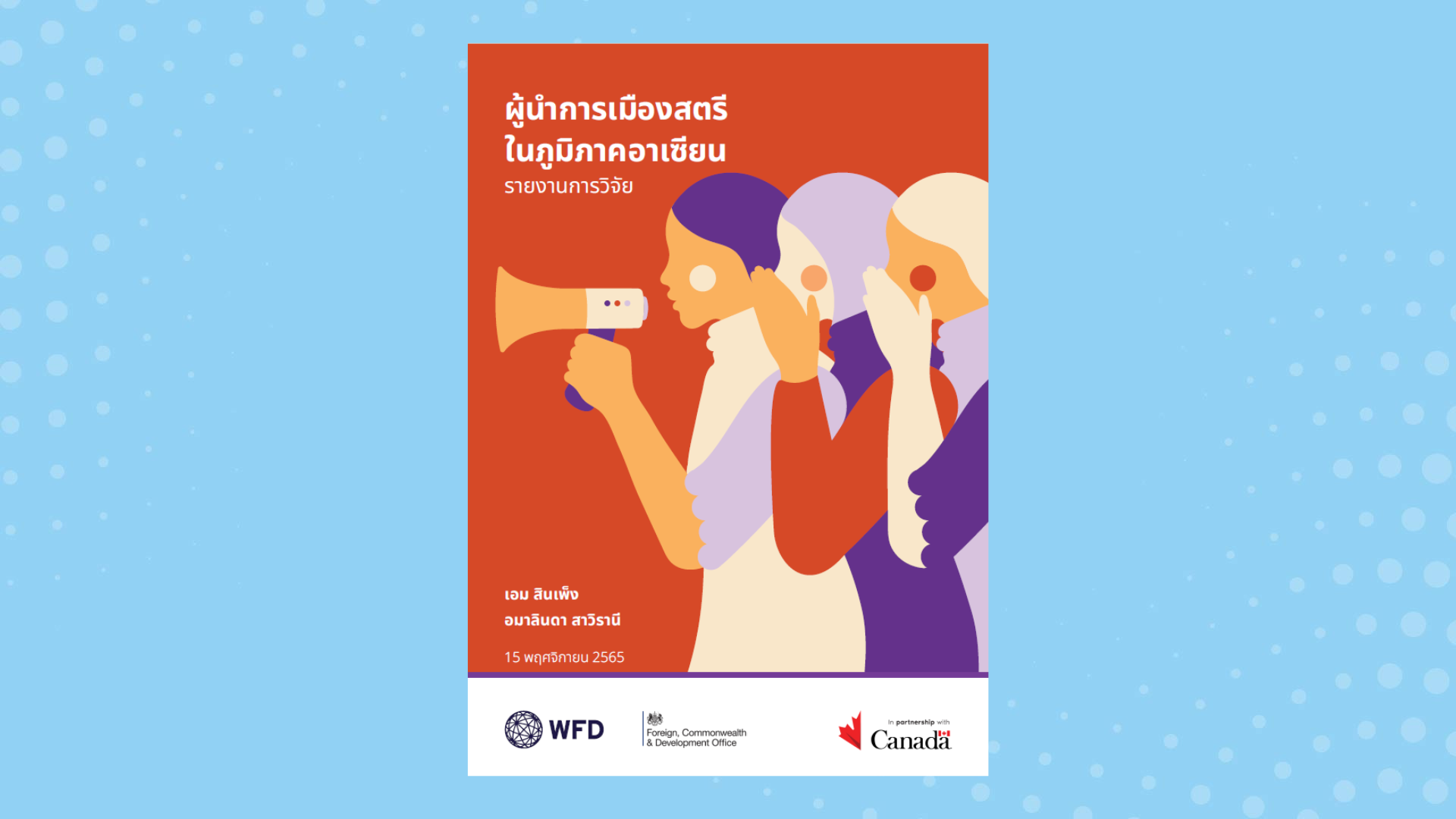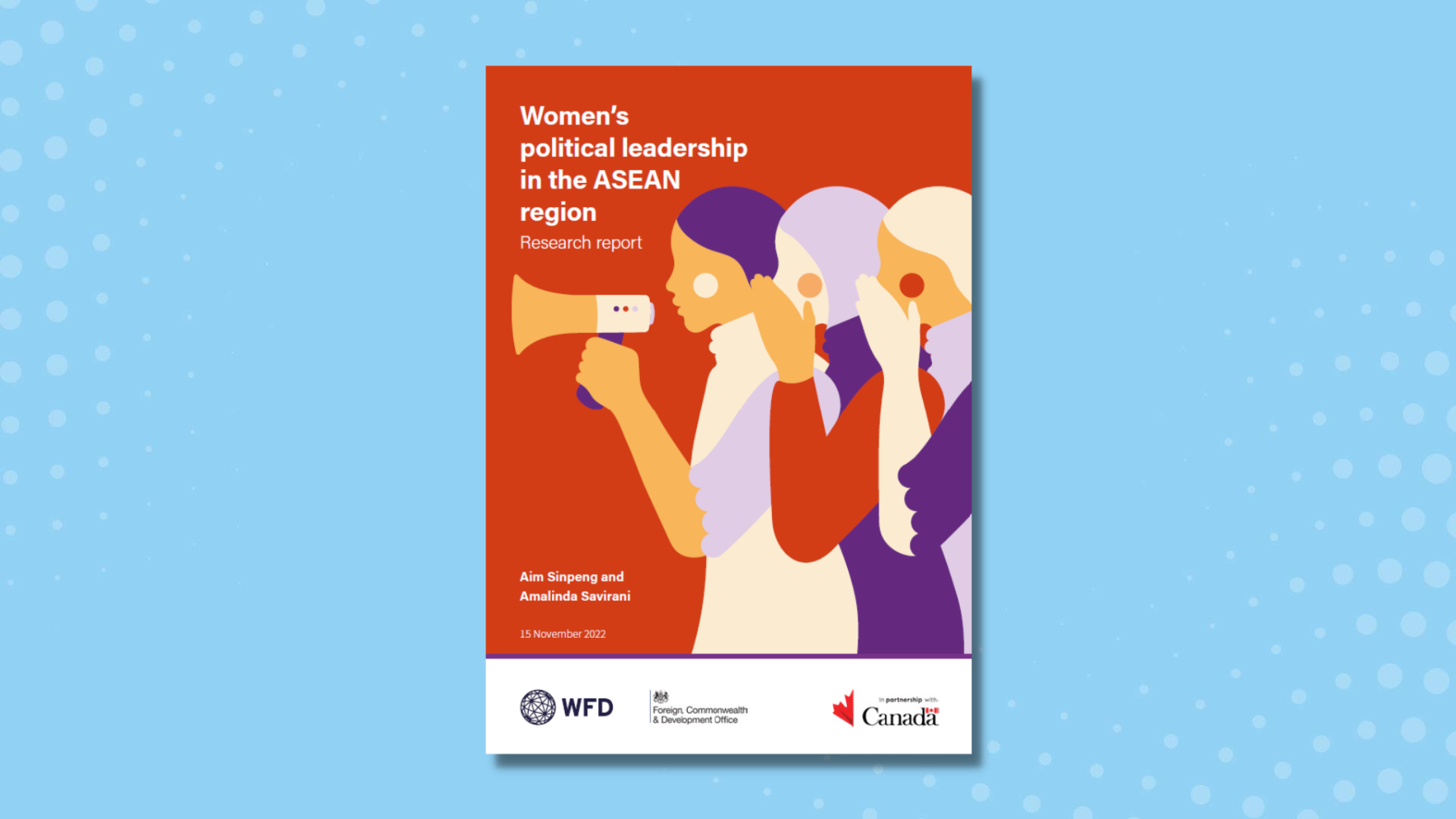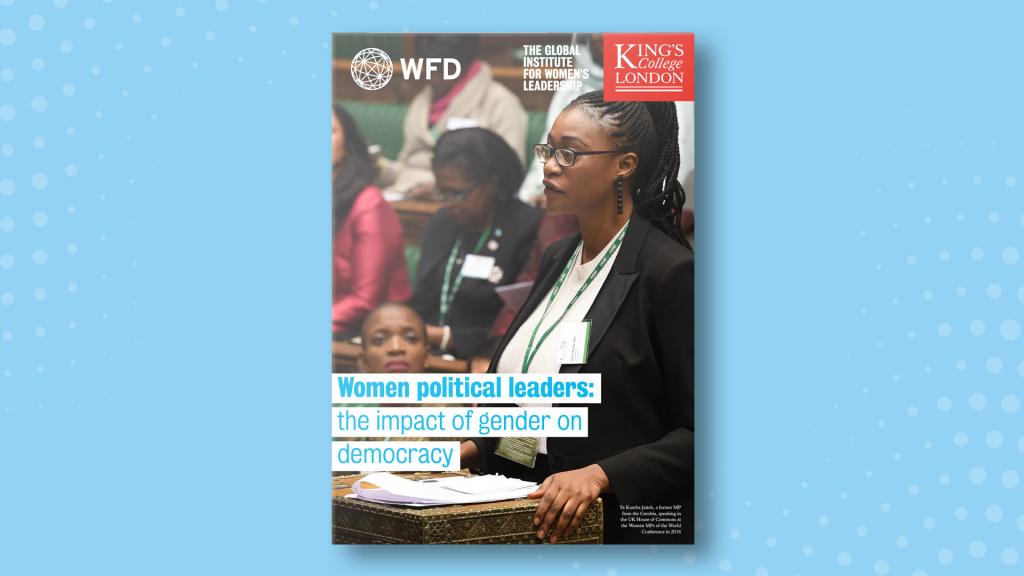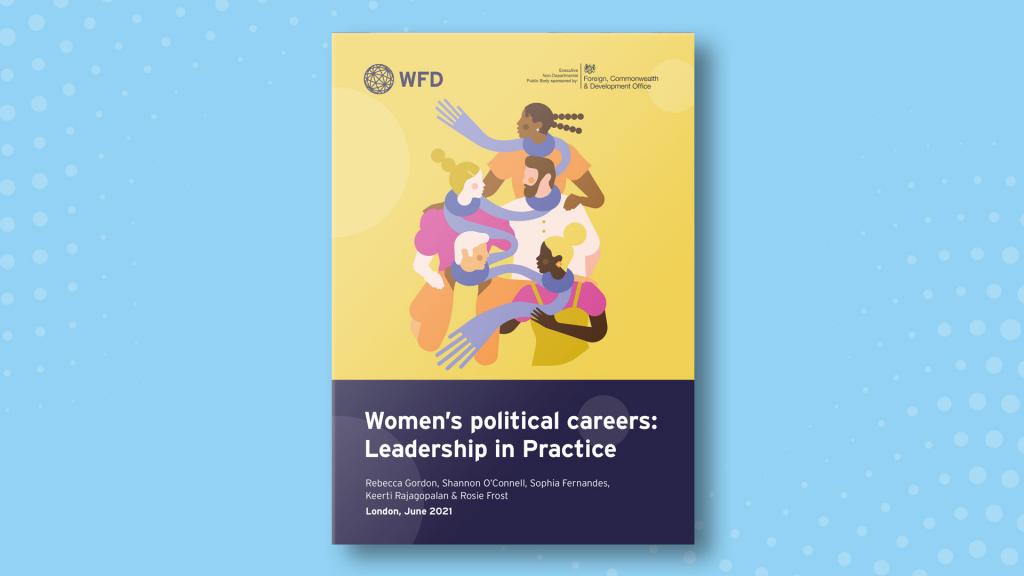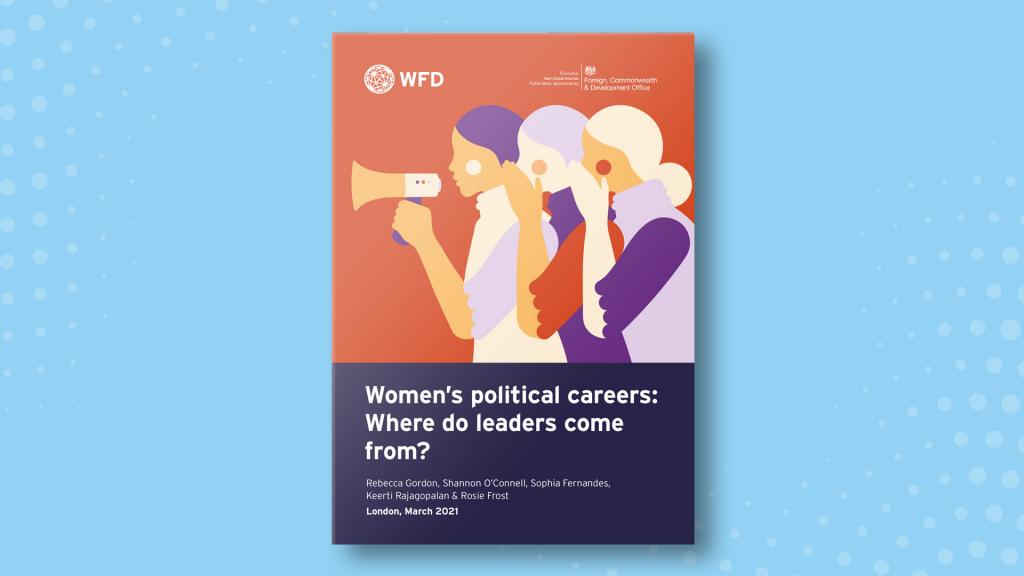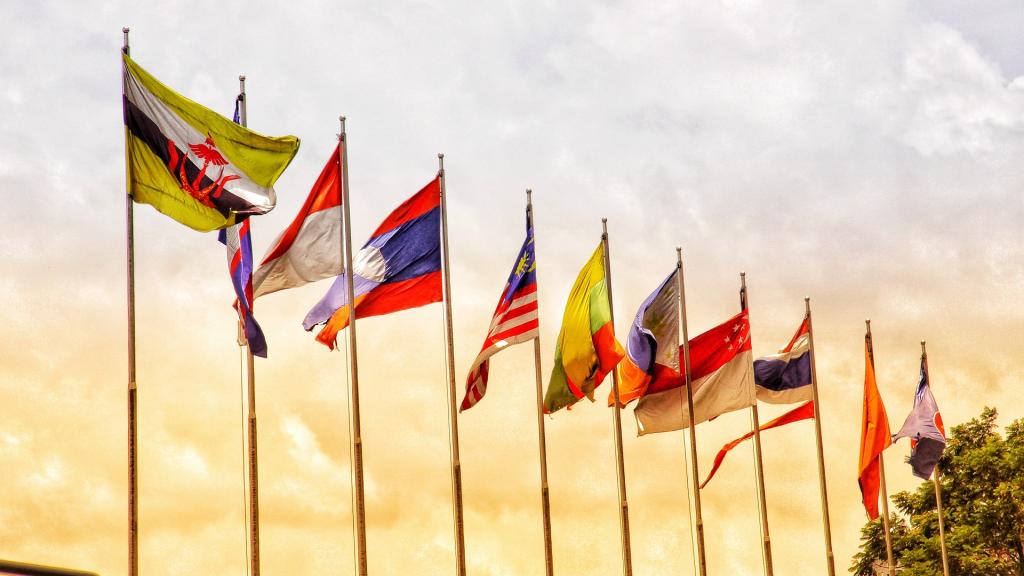
Aim Sinpeng

Amalinda Savirani
Southeast Asia is home to both high-achieving countries and those that are lagging when it comes to gender equity. According to the World Economic Forum’s 2020 Global Gender Report, the Philippines outperforms many Western nations – like Australia, the USA, and Switzerland – in closing the gender gap in education, economic participation, political empowerment, and health outcomes. By contrast, Myanmar is ranked in the bottom 25th quartile of countries in terms of gender equity. Across the ASEAN region and globally, political empowerment is an area that faces the toughest challenge when it comes to closing the gender gap. Most studies of women in political leadership only examine women in high positions of power in the formal political arena: women in parliament, female ministers, and heads of states. We seek to go beyond narrowly measuring the number of women in top political jobs by widening our conception of political leadership as well as our understanding of women’s varied pathways to political leadership.
This research report sought to understand what barriers women face in their pursuit of political leadership. We consider what structural, institutional, economic and cultural factors that hinder or stop women from fully participating in political participation, leadership and governance. We focus on the members of the Association of Southeast Asian Nations (ASEAN) with in-depth case studies of Indonesia, Malaysia, and Thailand where WFD has teams and strategic priorities. We seek to profile women who have broken through these barriers or have forged and democratised pathways to political power. We pay special attention to women political leaders who have experienced violence – both visible and hidden – in their pursuit of change.
We hope these research findings, which are based on learnings from current and emerging actions, will influence and inform the actions of governments and civil society organisations as well as inform the strategic direction of WFD in its efforts to support and catalyse women’s political leadership. The research is also intended to support advocates in their ongoing work for gender equality and political inclusion in Southeast Asia.
Key findings
- Despite overall progress towards gender equity in the ASEAN region, gender equity in political leadership still lags. While more people believe women should have equal access to political power than before, men are still viewed as better political leaders than women in most cases.
- The number of women in political leadership positions, both in local governments and national parliaments, has not continuously increased in the ASEAN region. All countries experienced either a drop or a flatlining in the number of women in top political positions in the formal institutions. This suggests that achieving gender equity in political leadership is not a straightforward process: it can both stall and regress.
- Most women political leaders face barriers to leadership. The top three barriers are: lack of financial resources, sexism and state repression. These constitute structural and cultural obstacles to women’s trajectory towards political leadership in ASEAN. Women political leaders who reported no barriers to leadership are either drawn from political families, have strong connections to political parties, or are political trailblazers.
- Autocracies perform better in getting more women into leadership positions particularly in getting women elected in national parliaments than more democratic states in ASEAN. Autocratic regimes are not antithetical to gender equality in politics when it comes to promoting more women to leadership positions. More research is needed, however, to better understand the extent to which women political leaders can get elected in the parliament in autocratic states and can perform well playing their function as a representative within this autocratic context in which general civil and political rights are limited in these countries.
- Democracy appears to reduce propensity for women political leaders to experience violence – both physical and online. Women political leaders in countries with low levels of democracy experience much higher instances of state repression, intimidation, persecution, and online harassment – all forms of violence against women politicians (VAWP).
- Structural issues represent the most enduring barriers to improving women's political leadership. The more religious a voter is, the less likely they are to support women in political leadership, especially among Muslim populations. Other key structural barriers that impede support for women political leaders are income levels and educational status. Having low levels of education and income is also a strong predictor for opposition to female political leadership.
- We divide political leadership into two main spheres: leadership in formal politics and grassroots political leadership (informal politics). Women in grassroots leadership face more barriers in accessing power and leadership positions than women who pursue leadership in the formal political arena. Once in power, grassroots political leaders also face more barriers to exerting influence and affecting change.
- There are three broad profiles of women political leaders identified in the ASEAN region: the networker, the trailblazer, and the activist. Women from elite backgrounds who pursue leadership in formal politics are most likely to network their way through power, by leveraging their family, business, and political party networks to give them access to leadership positions. Grassroots political leaders are most likely to be trailblazers: they create new paths to political leadership for others to follow. Some women leaders have taken all three paths.
- Women political leaders who come from challenging financial backgrounds tend to have more caring responsibilities, thus increased barriers to pursuing and maintaining leadership. This suggests the enduring impacts of gendered socioeconomic inequalities on women’s political advancement.
- Affirmative action policies work no matter how improperly they are applied. They increase women’s representation in politics in both the formal political and grassroots arenas and promote more gender-sensitive organisational environment.
- Institutions that are the biggest barriers to women’s political leadership are political parties and security agencies. Political parties are gatekeepers of access to political leadership positions in formal politics: they deter and enable women into positions of power. Security apparatus of the state exercise repression against women political leaders in both formal and grassroots politics. Their presence creates a climate of fear and intimidation. They sometimes employ violence against women leaders.
- 50% of women leaders interviewed focus on women issues when campaigning for leadership position and during their tenure. Politicians are less likely than grassroots leaders to emphasise women-focused issues, especially constituency MPs. Some women politicians strongly oppose affirmative action initiatives as they view them as antagonistic to women’s empowerment.
- Women leaders who are active on social media experience greater instances of online violence and harassment. The most common form of online violence is hate speech. The most frequent form of hate speech directed at female political leaders is religion-based, especially gendered Islamophobia.
- Young, activist, social media active women leaders in grassroots politics are the most vulnerable to both state and online violence. Usually, women leaders in this field deal with criticism as they are involved in advocacy on politically sensitive issues, positioning them as visible targets of political regimes and their supporters (cyber-mercenaries).
Barriers to women’s political leadership in the ASEAN region
Across the ASEAN region, women remain underrepresented in political life. Women are underrepresented in political office, as voters and in political leadership positions. The marginalisation of women in the political sphere continues to occur despite incremental changes in the right direction. While it is acknowledged that more women than ever before are leaders in the political arena than in the past, the gains made in Southeast Asia have been viewed as incredibly slow. Our interview findings also confirm that 69% of women political leaders faced some form of barriers to leadership, while only 31% reported having faced none. The discrepancies in the perceptions of women’s barriers to leadership are indicative of the uneven experiences to leadership women in ASEAN face.
The most important institutional invention that has increased the number of women political leaders globally is the gender quota. In Southeast Asia, the implementation of electoral quotas for women demonstrate success in increasing the amount of women representation at the national level. At the local level, there seems to be some positive impact on the number of women in local governments as well. Affirmative action policies implemented in civic organisations also empower grassroots women leaders. These organisations not only promoted and recruited female leaders, but also have gender-sensitive workplace policies in place, such as sexual harassment policy.
Money politics, patronage and clientelism is pervasive and entrenched in Southeast Asia. The outsize importance of material wealth and political connections needed to pursue political leadership has meant that elite women - those who are university educated, financially comfortable in their upbringing and do not have significant caring responsibilities – faced fewer barriers to leadership than non-elites. Out of the 45 women interviewed, 56% are elite women with the majority being politicians. Twenty percent of women political leaders are non-elite: they grew up relatively poor, did not attend university and have significant caring responsibilities. Most non-elite women found leadership outside formal politics.
Pathways to political leadership
Based on our interview data of 45 women political leaders in Indonesia, Malaysia, and Thailand, we construct three key profiles of pathways to women’s political leadership. They are:
- the networker model
- the trailblazer model
- the activist model
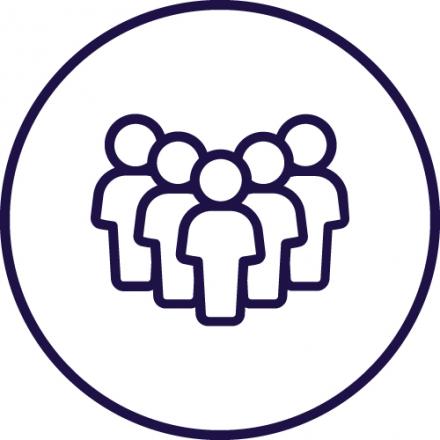
Networker
The networker pathway is one in which personal and professional networks are key assets for political leadership. Network ties to institutions, families or groups, are the key driving force that paves the way for leadership. A networker primarily relies on her network to break through barriers towards political leadership. The advantage of networked women is that their networks reduce the costs of entering politics. Networkers tend to have high financial capital, especially if they are drawn from business networks, which can help overcome the financial costs of being in politics. However, there is a high social expectation for networkers to be ‘married to their networks’ – attending all sorts of social events such as weddings and funerals. If they are networkers in politically divided societies and their networks are perceived as politically partial, then it becomes difficult to attract votes from the undecided and from those on the opposite side of politics.

Trailblazer
The trailblazer pathway is one marked by political entrepreneurship. This pathway model applies to women who chart their own journey to leadership by founding a new political party, organisation, or group to advocate for political change. They do not wait for anyone to open doors for them, thus removing entry barriers to leadership. Forty percent of women leaders interviewed are trailblazers. Women who adopt the trailblazer pathway have diverse backgrounds and positionality. Contrary to popular belief, setting up a new organisation does not require significant financial resources or political networks to succeed. This is especially true for grassroots initiatives where organisations do not have to be formally set up for advocacy work to begin. As such, the trailblazer pathway to political leadership is one with the fewest obstacles in terms of “leadership entry”. This pathway is also most suited for women who have few financial resources. For trailblazers, the barriers are not at the beginning stage, but rather at later stages once the organisation, group, or initiative has begun.

Activist
The activist pathway is exemplified by a sustained effort to advocate for political change. Women activists face the greatest barrier to becoming political leaders if they choose to join existing organisations. Because they often lack the political, business, and social capital to pursue political leadership, they have to work their way up to the top (unless the organisation as a gender quota policy). This is the path many grassroots women leaders take because of their background as activists in their early years, such as being student activists at university. They volunteer their time for a cause they care about and their hard work gets recognised by senior leadership of organisations, who then offer them an entry point to the organisation. They also often engage in costly activities that they need to take time off work or study to do and may face punitive punishments after (such as loss of jobs, getting kicked out of university, or jail).
Some women political leaders take combined pathways to leadership. They may start out as an activist, before trailblazing their way to leadership by founding a new organisation. They may subsequently pursue formal politics, leveraging networks gained over the years as an activist and head of a civic organisation. For the women leaders with diverse pathway experiences, their trajectories reflect the complimentary nature of these pathway models.
Violence against women in politics (VAWP)
Violence against women in politics (VAWP) has gained worldwide attention as an emerging area of research and advocacy in the past decade. Krook (2017) argues that the global increase of women’s participation in politics as politicians, activists, and voters, has also given rise to attacks against women in politics. VAWP is a form of gender-based violence (GBV) that includes any “act, or threat, of physical, sexual or psychological violence that prevents women from exercising and realising their political rights and a range of human rights” (UN Women, 2021). These may include preventing women from running for political office, exercising their votes freely, being able to campaign freely, and/or enjoying freedom of speech and assembly. VAWP can be in public or private spheres and can be perpetrated by family members, members of the public, and the state.
Out of the 45 women leaders interviewed, 88% reported having experienced violence and harassment because of their political role. Grassroots political leaders are more likely to be victims than politicians: 94% of grassroots leaders have been subjected to VAWP compared to 82% of women politicians. Online violence against women in politics is more commonly experienced by women leaders than physical violence. Of all the online violence suffered by woman leaders, hate speech tops the chart at 79% of women leaders having experienced this kind of online violence, followed by trolling (38%), physical threats (31%), sexual harassment (29%) and fake news attacks (9%).
Women leaders in countries with low levels of freedom also experience significant levels of state repression. Thailand in particular stands out in this case as both politicians (in opposition) and grassroots leaders experience high levels of state repressive tactics. These leaders reported being frequently “visited” by police or security agents at their homes or work. They were followed, photographed, and threatened. 6 out of the 17 leaders interviewed were detained and imprisoned for their political leadership. Young activist leaders are the most vulnerable to VAWP.
Conclusions and key takeaways
Taken together, our research suggests that there are divergent pathways for women to participate in and become political leaders. While each individual leaders’ experience is unique, there are broad commonalities shared among them. Some of the most enduring barriers to women’s political participation, such as cultural norms and economic inequalities, are entrenched and slow to change. At the same time, efforts to increase women’s political participation at the leadership level, such as gender quotas, no matter how improperly applied, do work. Women leaders look for and appreciate the support of other female role models and mentors in building their confidence. Technology can, under the right circumstances, enable women to extend their influence and strengthen their leadership profile. But it also opens the door to more potential violence and harm. Overall, there are more women leaders in ASEAN today than they were two decades ago. Their diverse journeys towards leadership reflect the nuanced and complex pathways to becoming today’s political leaders.
The rise of women political entrepreneurs in the ASEAN region reflects the opening of political and entrepreneurial space for women outside of formal political that is often not considered when looking at the number of women in parliaments. Channels for political participation and leadership have multiplied with the ubiquity of internet and social media usage, opening up new pathways for women to advance political change, at least for women with advantageous socioeconomic background, but not so much to women with poor background. Women leaders with disabilities, for instance, have been able to pursue higher education, a professional career, and activism – all thanks to online connectivity that allows school, work, and advocacy to be done at low-cost online. Digital technologies have also made lives of people with disabilities better: they have more tools than ever before to allow them to improve their confidence in their ability to instigate and lead social change.
Women’s positionality still matters: it dictates the nature and length of pathways to political leadership. Pathways to political leadership have different lengths, from short to moderate to long. Pathway lengths reflect the number and type of barriers each woman faces in her pursuit of political leadership. A trailblazer leader who co-founds a new organisation with others may be able to overcome barriers by leveraging their co-founders’ assets, such as financial resources or networks, to overcome their own barriers. Women who share the same vision for social and political change, who may come from different backgrounds, should be encouraged to partner with one another instead of trying to do it alone.
We hope these research findings, which are based on learnings from current and emerging actions, will influence and inform the actions of governments, civil society organisations as well as inform the strategic direction of WFD in its efforts to support and catalyse women’s political leadership. The research is also intended to support advocates in their ongoing work for gender equality and political inclusion in Southeast Asia.
Women's political leadership in ASEAN region (Thai version)
